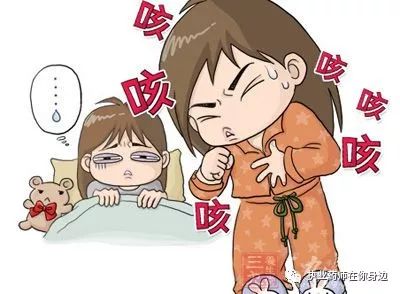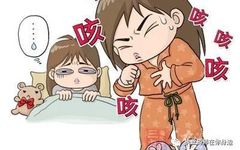The following content is for reference only; specific treatment and medication should be conducted under the guidance of a physician!
 Wind-heat cold is caused by the invasion of wind-heat evil and the disharmony of lung qi. Traditional Chinese Medicine (TCM) believes that wind-heat cold is characterized by the invasion of wind-heat evil.For wind-heat cold, it is advisable to choose TCM formulas that have the properties of dispersing wind-heat and clearing heat and detoxifying. The main ingredients of such formulas typically include Bo He (薄荷, Peppermint), Niu Bang Zi (牛蒡子, Burdock Seed), Sang Ye (桑叶, Mulberry Leaf), and Ju Hua (菊花, Chrysanthemum), which are all herbs that disperse wind-heat, along with Shi Gao (石膏, Gypsum), Jin Hua (银花, Honeysuckle), and Lian Qiao (连翘, Forsythia) for clearing heat and detoxifying, as well as Jie Geng (桔梗, Platycodon) and Xing Ren (杏仁, Apricot Kernel) to descend lung qi.Symptoms include: Patients may experience sore throat, cough, phlegm production, with phlegm typically being yellow or black, nasal congestion, and yellow nasal discharge. The tongue may have a yellow or white coating, and the tongue body may be red. Other symptoms may include constipation, fever, thirst, and irritability.Dietary therapy methods:(1) Hangju Sugar Tea: 30 grams of Hangju flower and appropriate amount of sugar. Place Hangju flowers in a teapot and steep in boiling water, adding sugar to taste. This helps to open lung qi and stop cough, clearing the three burners of excess heat. It is suitable for the initial stage of wind-heat cold with headache and fever. (2) Mung Bean Porridge: 50 grams of mung beans, 100 grams of japonica rice, and appropriate amount of rock sugar. Wash the mung beans and japonica rice, cook them into porridge, and add rock sugar when hot, stirring well before consumption. This can clear heat, resolve exterior conditions, and dispel summer heat and dampness, making it an excellent remedy for summer damp colds.
Wind-heat cold is caused by the invasion of wind-heat evil and the disharmony of lung qi. Traditional Chinese Medicine (TCM) believes that wind-heat cold is characterized by the invasion of wind-heat evil.For wind-heat cold, it is advisable to choose TCM formulas that have the properties of dispersing wind-heat and clearing heat and detoxifying. The main ingredients of such formulas typically include Bo He (薄荷, Peppermint), Niu Bang Zi (牛蒡子, Burdock Seed), Sang Ye (桑叶, Mulberry Leaf), and Ju Hua (菊花, Chrysanthemum), which are all herbs that disperse wind-heat, along with Shi Gao (石膏, Gypsum), Jin Hua (银花, Honeysuckle), and Lian Qiao (连翘, Forsythia) for clearing heat and detoxifying, as well as Jie Geng (桔梗, Platycodon) and Xing Ren (杏仁, Apricot Kernel) to descend lung qi.Symptoms include: Patients may experience sore throat, cough, phlegm production, with phlegm typically being yellow or black, nasal congestion, and yellow nasal discharge. The tongue may have a yellow or white coating, and the tongue body may be red. Other symptoms may include constipation, fever, thirst, and irritability.Dietary therapy methods:(1) Hangju Sugar Tea: 30 grams of Hangju flower and appropriate amount of sugar. Place Hangju flowers in a teapot and steep in boiling water, adding sugar to taste. This helps to open lung qi and stop cough, clearing the three burners of excess heat. It is suitable for the initial stage of wind-heat cold with headache and fever. (2) Mung Bean Porridge: 50 grams of mung beans, 100 grams of japonica rice, and appropriate amount of rock sugar. Wash the mung beans and japonica rice, cook them into porridge, and add rock sugar when hot, stirring well before consumption. This can clear heat, resolve exterior conditions, and dispel summer heat and dampness, making it an excellent remedy for summer damp colds.
(3) Winter Melon and Lotus Leaf Porridge: 500 grams of winter melon, 30 grams of white lentils, and 15 grams of fresh lotus leaves. Wash the lentils, lotus leaves, and winter melon, cutting the winter melon into small pieces with skin on. Place the lentils and lotus leaves in a pot with an appropriate amount of water, bring to a boil, then add the winter melon and simmer for 1-2 hours, seasoning to taste before drinking. This has the effects of clearing lung heat, resolving phlegm, and stopping cough, as well as treating wind-heat colds.
(4) Peppermint Porridge: 15 grams of peppermint decocted for juice, cooled, then add 60 grams of japonica rice and water to cook porridge. When the porridge is nearly done, add the peppermint juice and an appropriate amount of rock sugar. Consume slightly warm for best results, promoting sweating. Peppermint is a key herb for dispersing wind-heat, and combined with japonica rice and rock sugar, it promotes sweating and protects the stomach. This drink is most suitable for those newly affected by wind-heat.
Medication recommendations:
(1) Yin Qiao Jie Du Wan
Function and indications: Disperses wind-heat and clears heat and detoxifies. Used for wind-heat cold, fever, headache, cough, dry mouth, and sore throat. Applicable population: Patients with headache, cough, and dry mouth due to wind-heat cold.注意事项: Not suitable for patients with wind-cold colds; those with severe chronic diseases such as hypertension, heart disease, liver disease, diabetes, and kidney disease should take it under the guidance of a physician; for other matters, please read the instructions carefully.
(2) Qing Kai Ling Oral Liquid
Function and indications: Clears heat and detoxifies, calms and tranquilizes. Used for fever, irritability, sore throat, red tongue, yellow coating, and rapid pulse due to external wind-heat or internal fire toxicity; upper respiratory infections, viral colds, acute pharyngitis, acute bronchitis, and other conditions that fall under the above symptoms.
Applicable population: Patients with high fever and common colds, viral colds.
注意事项: Not suitable for patients with wind-cold colds; caution in patients with chronic illness who may experience diarrhea. For other matters, please read the instructions carefully.
Combination medication reference:
Qing Kai Ling Soft Capsules + Chuan Xin Lian Neili Droplets + Amoxicillin + Fever Patch
Applicable symptoms: Suitable for patients with high fever, sore limbs, dry mouth, and cough with thick yellow phlegm. Patients with wind-heat cold and concurrent pharyngitis, tonsillitis, and other upper respiratory infections are more suitable.
Today, I will stop here. If you have any questions, you can add my WeChat public account “Practicing Pharmacist by Your Side” or scan the QR code below to add the public account for consultation and discussion. See you next time.

Symptoms and Medication Recommendations for Wind-Cold
Symptoms and Medication Recommendations for Gastrointestinal Cold

